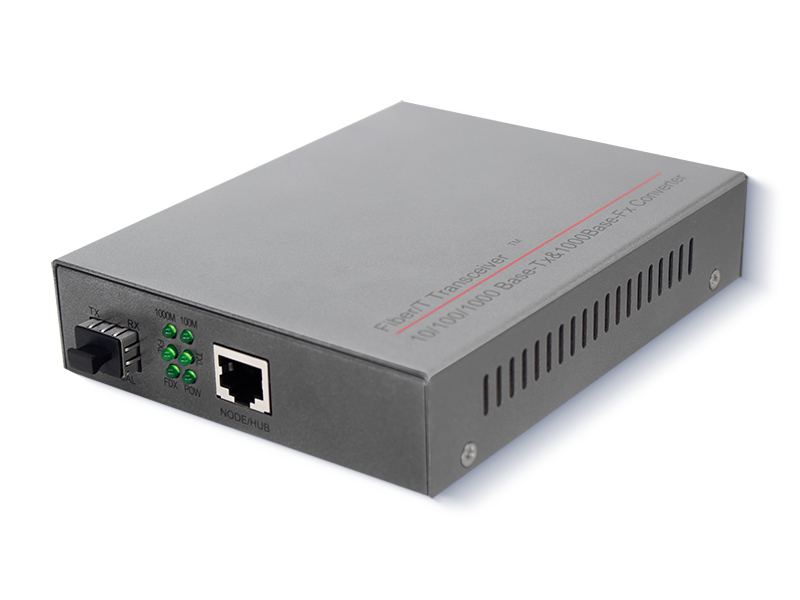In the ever-evolving world of networking, maintaining reliable and secure connectivity is crucial for businesses and individuals alike. One key technology that plays a pivotal role in achieving this is the external media converter. Designed to convert electrical signals into optical signals, these converters facilitate seamless transmission of data over fiber optics, offering numerous advantages over traditional twisted pair Ethernet connections. In this article, we will explore the significance and benefits of
external media converters in enabling remote transmission for network cameras, computers, switches, and other equipment.
 1. Optical Signal Transmission:
1. Optical Signal Transmission:
External media converters facilitate the conversion of 1000M Ethernet electrical signals into optical signals. These optical signals are then transmitted over single-core or dual-core fiber in the form of optical pulses. By utilizing fiber optics, these converters offer several advantages that surpass those provided by traditional twisted pair Ethernet connections.
2. Enhanced Security:
The use of optical fibers for data transmission via external media converters ensures a high level of security. Unlike electrical signals transmitted over twisted pair cables, optical signals are more difficult to intercept or eavesdrop on. This added layer of security is crucial for protecting sensitive data in environments where data privacy is of utmost importance.
3. Improved Reliability:
External media converters enhance network reliability by leveraging the robustness of optical fiber. Fiber optic cables are less susceptible to electromagnetic interference (EMI) and radio frequency interference (RFI), resulting in a more stable and reliable data transmission. This reliability is particularly valuable in environments where network failures can have severe consequences, such as industrial settings or critical infrastructure.
4. Faster Transmission Speeds:
With external media converters, data can be transmitted at high speeds, providing faster network connectivity. Fiber optics enable greater bandwidth capabilities, allowing for the efficient transfer of large amounts of data in real time. This is especially beneficial in scenarios where there is a need for high-volume data transfer, such as video streaming, cloud computing, or data-intensive applications.
5. Extended Transmission Distance:
Another notable advantage of using external media converters is the ability to transmit data over long distances. Optical fibers have a significantly higher transmission range compared to twisted pair cables. This makes them ideal for applications that require data transmission over extended distances, such as connecting remote network devices or establishing connections between multiple buildings or campuses.
As the demand for reliable and secure network connectivity continues to rise, the role of external media converters becomes increasingly significant. Their ability to convert electrical signals to optical signals and transmit data over fiber optics offers numerous benefits, including enhanced security, improved reliability, faster transmission speeds, and extended transmission distances. By adopting external media converters, businesses and individuals can effectively address the challenges associated with remote transmission for network cameras, computers, switches, and other equipment. With their compliance to industry standards, such as IEEE802.3 and IEEE802.3U, these converters provide a reliable network infrastructure that meets the evolving requirements of modern connectivity.
